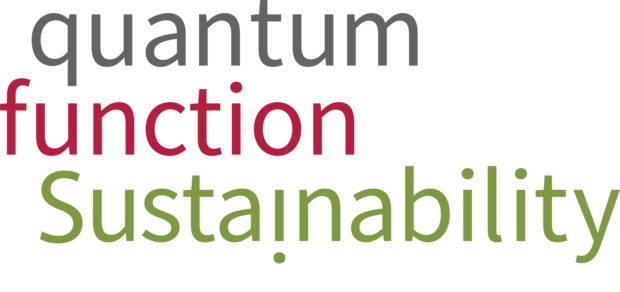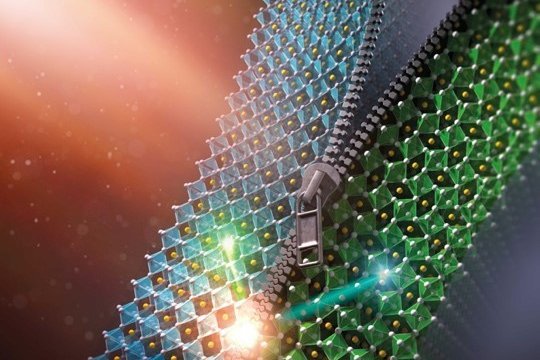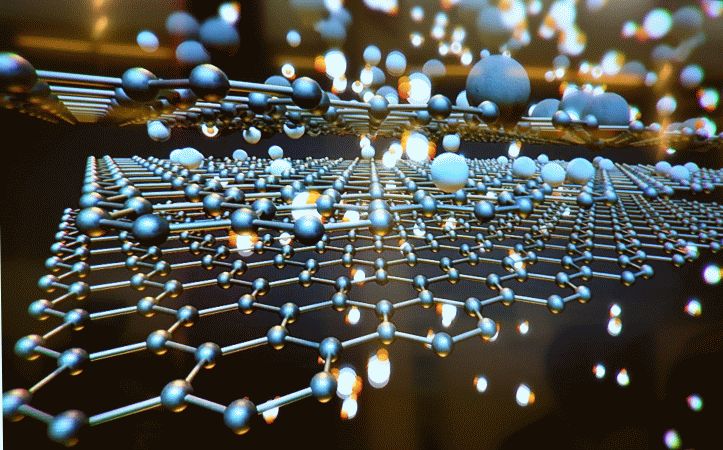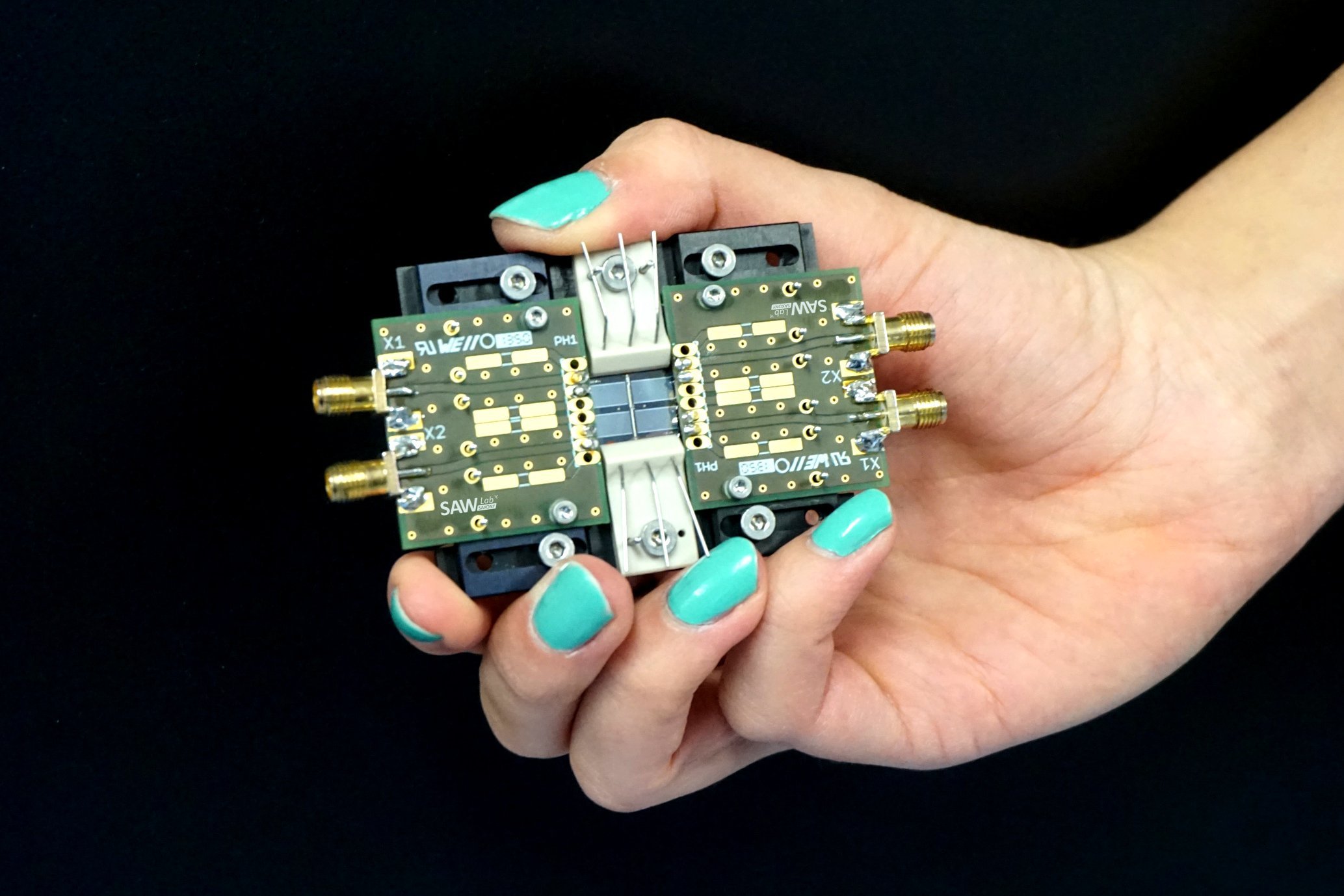

The IFW research program brings together many disciplines, methods and competences of the five IFW institutes. Despite its breadth and interdisciplinarity, all IFW research activities have in common that scientists are investigating still unresearched properties of matter with the aim of developing new functionalities and applications.
QUANTUM: Quantum Materials
Quantum materials are solids showing peculiar quantum phenomena related to unconventional spin interactions, electronic correlations, electron-photon interactions and/or topological band structures. Examples are superconductivity and magnetism. Quantum effects have also a strong influence in materials with spatial extension constraint to the nanometer scale, like nanoparticles, thin films or nanotubes.
FUNCTION: Functional Materials
Functional materials exhibit special physical, mechanical or chemical properties which enable them to fulfil a specific function in devices, e.g. conducting electric current, filter acoustic waves of a certain frequency, shielding magnetic fields or storing energy.
SUSTAINABILITY: Prerequisite for Application
The environmental and climate compatibility of new materials is increasingly becoming an indispensable prerequisite for their use in new technologies. Conversely, new materials and new synthesis methods have great potential in themselves to promote a more responsible use of energy and resources. In any case, a fundamental understanding of the chemical and physical processes involved is the prerequisite for innovations in sustainable technology.
The mission of IFW is to pursue fundamental as well as application-oriented research and development in the field of solid-state matter and materials science. Key elements of the research activities are both experimental and theoretical studies of phenomena that take place at the level of electrons, atoms, molecules and nanostructures as well as the characterization of physical and chemical material properties. This includes also application-oriented research up to the development of new materials and devices based on investigated physical effects and on new functionalities for a sustainable future.

Research Area 1
New materials that promise new functions due to novel, unconventional electronic properties

Research Area 2
Materials with application potential for efficient and responsible use of renewable energies, e.g. photovoltaic and thermoelectric materials

Research Area 3
Novel 2d materials, atomically thin layers, heterostructures, and topologically protected (surface) states

Research Area 4
Application-oriented research up to the development of prototypes or commercial products
Research in this area is focused on materials with a potential for technological applications emerging from their complex, quantum mechanical electronic properties. These electronic properties can (i) result from a complex interplay and ordering of electronic spin, orbital, charge, and lattice degrees of freedom, (ii) emerge in a more general sense from the presence of strong electronic correlations, (iii) appear through strongly frustrated magnetic interactions, or (iv) be observed in the context of topologically protected spin and charge states. The exploration of these intrinsic quantum phenomena is on one hand aimed at scientific discoveries that ultimately may open a road to new functionalities, devices, and applications. On the other hand, the aim is to further develop and improve already existing quantum materials and their functionalities. The abovementioned physical properties manifest themselves in several material classes: in certain families of transition-metal oxides, molecular solids and in a range of intermetallic materials. What sets these systems apart is that their valence and conduction electrons typically retain to some extent their atomic character, resulting in a rich interplay of localized and delocalized electronic degrees of freedom. This renders these materials both practically and conceptually very different from simple metals and semiconductors with well-understood itinerant quasi-particles. Often the quantum mechanical interplay between the localized and delocalized electronic degrees of freedom leads to anomalous charge transport properties, for instance, due to the presence of metal-insulator transitions, and exceptional types of ordering phenomena, such as unconventional forms of superconductivity and quantum magnetism. Functionalities that arise from this are for example large magnetocaloric effects, high-temperature superconductivity, large magnetic remanence and strong coercivity, or large magnetoresistance.
Research Topics
1.1. Exotic ground states and low-energy excitations
1.2. Unconventional superconductivity: Mechanisms, materials and applications
1.3. Magnetism
Research area 2 addresses environment-friendly materials as well as novel materials for future sustainable applications. Environmentally friendly and sustainable energy generation is one of the greatest tasks of our time to meet the challenges of climate change and the constantly increasing global demand for energy. Therefore, the focus of research area 2 lies on materials that have a high application potential for the efficient and environmentally friendly use of renewable energies, such as photovoltaic or thermoelectric materials and components. In addition to the classic photovoltaic modules made of silicon, new alternative materials have emerged in recent years that enable transparent, flexible, and lightweight modules. Solar cells based on lead-halide perovskites and nanocrystals containing heavy metals are particularly promising for opening new areas of application. However, the high concentration of toxic and environmentally harmful elements such as lead or cadmium in these solar cells is problematic. In research area 2 new materials as well as technological solutions are being developed to improve the environmental and climate compatibility of the material systems used - also considering the circular economy as an integral component. One prominent example is the replacement of toxic and environmentally hazardous substances with alternative and harmless compounds in order to make photovoltaic, optoelectronic, and thermoelectric technologies more environmentally friendly and resource-efficient. The prerequisite for this is a fundamental understanding of the chemical and physical processes involved, the investigation of which is of great importance at the IFW. All research approaches are linked by common methodological approaches and interests, with the aim of understanding and mastering the (micro)structure and physical properties of photovoltaic materials on different length scales by adapting the chemical composition and processing conditions. This holds also true for the development of novel thermoelectric materials that increase the efficiency of thermoelectric components and improve their environmental and climate compatibility.
Research topics
2.1. Photovoltaic functional materials
2.2. Green chemistry and processes
2.3. Thermoelectric materials
When the available dimensionality of a system is reduced, its internal structure and physical response can change drastically. 2D materials in the form of monolayers or at interfaces behave completely differently from their 3D counterpart. Moreover, properties can be tuned in situ by electrical gating, sparking significant interest in the fundamental study of condensed matter physics and technological applications. Entirely new physical properties also emerge at surfaces and interfaces of topological materials. For example, in topological insulators, the electron spins of topologically protected surface states are locked to their momentum, a property that is also interesting in the context of future spintronics. In this Research Area 3 we address these two complementary aspects of reduced dimensionality, i.e. the synthesis of novel 2d materials and topologically protected (surface) states. Concerning the 2D materials, the work on large-area synthesis of heterostructures is one of the main directions of the research program. It spans a broad range of IFW's core competencies: from developmental precursor chemistry and characterization, film growth techniques such as atomic layer deposition, metalorganic chemical vapor deposition, and chemical vapor transport over structural, optical, spectroscopic as well as electrical transport characterizations up to dedicated theoretical modeling employing quantum chemistry and density-functional based calculations.
With respect to topology, we pursue three main directions (1) We search for many-body effects and other unconventional properties of topologically protected (surface) states. One example is PtBi2, an IFW-synthesized material that combines Weyl physics with the superconductivity of its surface states. The second direction (2) concerns tunable photonic crystals, which are also promising metamaterial platforms for combining topological protection with on-chip optical signal manipulation. (3) The prediction, realization and investigation of non-Hermitian topology is the third direction. Motivated by theoretical predictions, we investigate realizations in condensed matter as well as topoelectric circuits close to applications for novel sensors.
Research Topics
3.1. 2D systems: Synthesis, interfaces and integration
3.2. Topological state of light and matter
Research area 4 binds together projects from basic and applied IFW research that are very application-oriented and extends to the development of prototypes or commercial products. Despite this clearly application-related direction long-term expert knowledge of fundamental aspects of methods and materials as well as special technologies is essential for all projects in this research area.
One example of this is research work on surface acoustic waves (SAW) for new technologies. Based on the broad IFW expertise in the areas of fundamentals, materials and component design, the range of application of SAW technologies is constantly being expanded. Recent examples include SAW sensor developments for wind turbines or SAW devices for aerosol generation.
Another topic in research area 4 is the engagement in a large-scale liquid hydrogen consortium, to which the IFW is contributing its many years of development experience in the field of low-temperature research technology, its materials expertise for applications under extreme parameters and its expertise in component and sensor development.
The third topic in this research area concerns the development of high-performance metallic alloys. In addition to the optimization of strength, wear and corrosion resistance and biocompatibility, the focus is also on resource and sustainability considerations. This includes, for example, the substitution of strategic metals such as cobalt or tungsten or the use of resource-saving additive manufacturing processes.
Activities in this field of research are characterized by close cooperation with industry. The practical relevance is also reflected in a large number of national and international patents.
Research Topics
4.1. Surface acoustic waves: Concepts, materials and applications
4.2. Cryo-technologies
4.3. Alloy design and process development